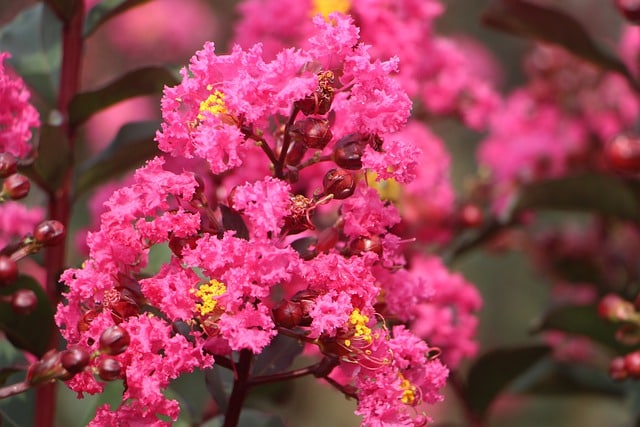
Crape Myrtle blooms rely on smart pruning
Few flowering plants can compete with crape myrtles for vibrant summer color. As an added bonus, crape myrtles thrive in heat and humidity and are drought tolerant to boot. Though many people plant crape myrtles, few people prune them correctly. Correct pruning yields gracefully shaped trees with more blooms that are held upright on strong stems. And flowers arrive earlier than do those on unpruned or mispruned plants.
Crape myrtles bloom on new growth, so prune them in early spring before they break dormancy. Although some gardeners prune their crape myrtles in the fall, we do not recommend doing this. Fall pruning not only creates an unattractive look for winter but also removes the current year’s growth as a buffer against any potential winter damage. Good pruning while crape myrtles are young will mean less maintenance when the trees are older.
Here are a few tips to follow:
1. Start pruning at the bottom. The habit of a crape myrtle is to produce multiple trunks, which can cause the plant to get crowded as it matures.
2. Prune suckers and any additional trunks as close to the soil line as possible.
3. Remove low branches to avoid having to walk under the branches or see through them to view oncoming traffic. A good rule of thumb is to begin cutting branches that are lower than 6 to 8 feet off the ground.
4. Thin the crown by removing any branches that are growing into an area already occupied by another branch.
5. Prune weak growth. Remove any branches or stems smaller in diameter than a pencil. Leaving branches that small on the tree will result in weak new growth.